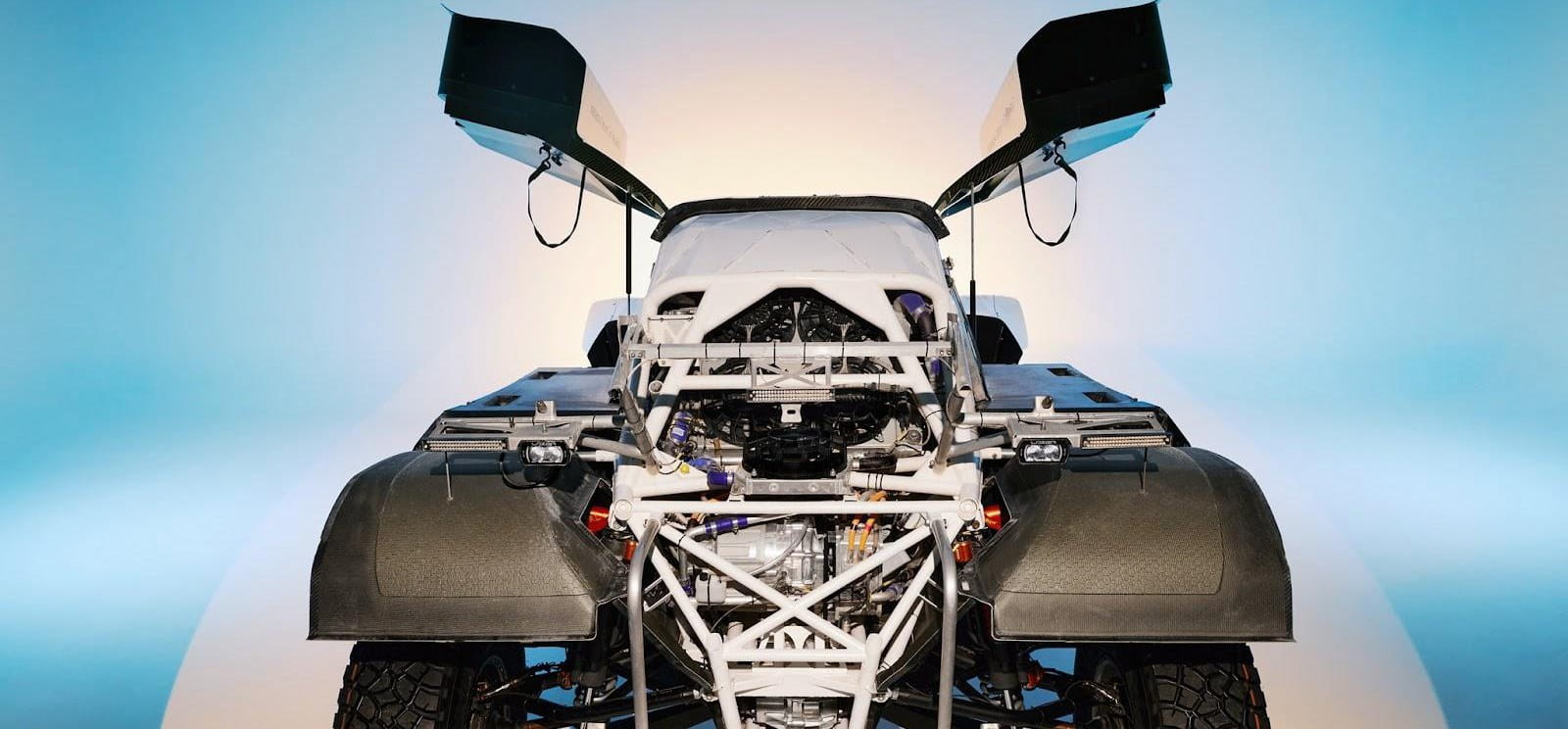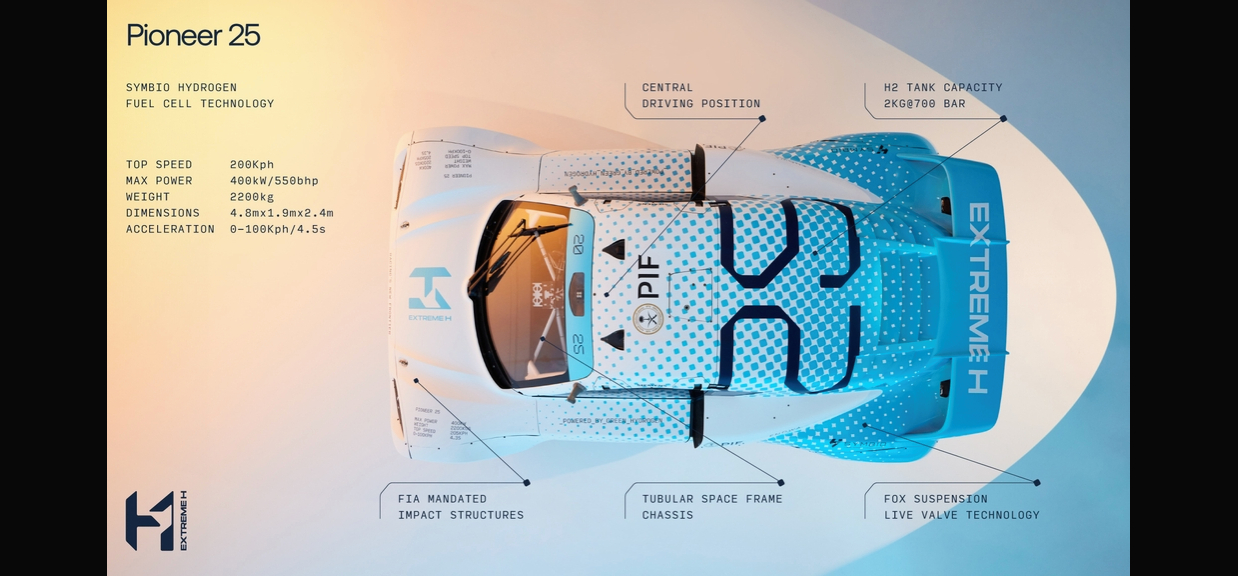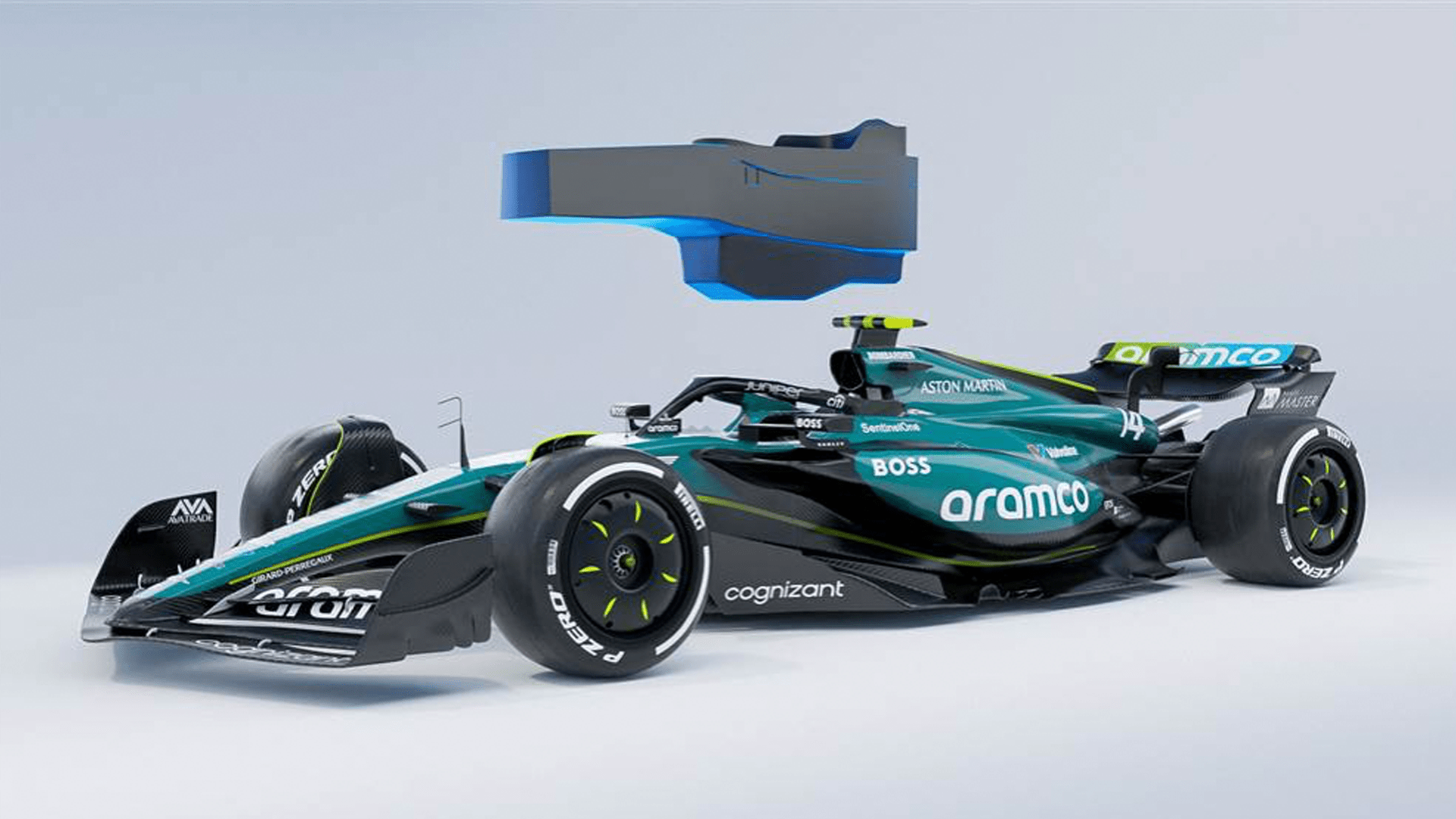Future
Extreme H: How fast will the new car be, and why choose hydrogen?
by Samarth Kanal
4min read
.jpg?cx=0.5&cy=0.5)
Upcoming hydrogen off-road racing series Extreme H is progressing at a rapid rate ahead of its 2025 debut. Here’s how the series has prepared, and why its organisers feel a transition from electric power to hydrogen power, and its current Extreme E guise, is necessary.
RaceTeq spoke to series technical director Mark Grain earlier this year but now we know much more about the series' aims, the technology behind its hydrogen transition, and the new car with which its teams will race.
The new Extreme H car
There are some clear differences between the Pioneer 25 and its electric predecessor. For one, the new car now has a centrally mounted seat for the driver, giving them a better view of the obstacles ahead and improving the car’s weight distribution.
New suspension, supplied by Fox, uses “live valve” technology. This technology uses a number of sensors that control the suspension stiffness automatically while the driver tackles tough terrain. Incidentally, Fox uses similar technology in some of its mountain bikes.
The chassis is a tubular space frame - a series of cylindrical metal tubes connected together to form a rigid and lightweight foundation - and it’s bolstered by FIA-mandated impact structures, which offer further protection from heavy impacts.

A cutaway showing the tubular space frame under the bodywork of the new Extreme H car
The bodywork is mainly carbon fibre, with some of it reinforced by flax - a natural, biodegradable fibre.
Of course, the biggest change is the hydrogen tank. Pioneer 25 includes a tank of hydrogen with a capacity of 50 litres to feed its fuel cell. In turn, the fuel cell powers two electric motors - one at the front, and one at the rear.
Here are the specifications for the new Extreme H off-road racing car.
- Top speed: 200km/h
- Acceleration: 0-100km/h in 4.5 seconds
- Hydrogen fuel cell output: 75kW
- Max power: 400kW (550bhp) from two electric motors
- Weight: 2,200kg

The specifications and dimensions of the new Extreme H car
“We are hoping that production kicks off through the tail end of September and through October, and we'd like to get cars out to teams in November,” said Grain to media including RaceTeq ahead of the car’s official launch in late June 2024.
Grain added: “The amount of testing that [the previous car had] was actually very, very limited, it's nowhere near the amount of kilometres that we've got under our belt in Extreme H.
“So we're in a completely different set of circumstances and I'm very confident that we can go into that first race in 2025 with this big number under our belt.”

New suspension, safety features and a centrally-mounted driver position are among the differences between the Extreme E car and the Extreme H car
Why has Extreme E transitioned to hydrogen?
Extreme E aims to “use electric racing to highlight remote environments under threat of climate change issues, and to encourage us all to take positive action to protect our planet’s future.”
This goal will carry over to Extreme H when it makes its debut in April 2025, and further credibility will be lent to the series when it becomes the first FIA hydrogen-powered world championship in 2026.
Series CEO Alejandro Agag said to select media that the series is trying to rekindle “a certain loss of momentum of the climate emergency feeling”.

The series will continue to use the St. Helena - a former British Royal Mail ship - to transport its personnel, infrastructure, and cars
Agag added that the world needs “every source of energy,” including renewable energy and optimised fossil fuels in the future, which is why Extreme H is exploring the use of hydrogen.
“That's why I think it is the perfect timing to launch a new championship like this, which is a championship not only focused on mobility; we're going to focus on cars and the use of hydrogen for cars.”
Not only is it a challenge for Extreme H to build a fleet of hydrogen racing cars, but transporting the hydrogen itself is difficult because the element is so light - and it can easily leak.
The CEO added that Extreme H is the “perfect format” for hydrogen because the cars are large enough to suit 2kg hydrogen tanks, and they race on rugged terrain - which means the hydrogen powertrains can be tested in challenging conditions.
As for the hydrogen itself, Agag says Extreme H will use green hydrogen, which is hydrogen produced with renewable power sources such as solar power or wind power.
If it was easy, there would be no need for a championship. That's why we do it.
Alejandro Agag
, Extreme H CEO

The new Extreme H hydrogen racing car at the series’ launch event in London, aboard the St. Helena ship, in June 2024
“If it was easy, there would be no need for a championship. That's why we do it.
“I'm very aware that there are many challenges around hydrogen as there are many challenges around batteries because there is no perfect solution. But the best solution we can get, I think, will be a combination of all of them.”
In 2026, Extreme H will not only become the world’s first hydrogen world championship - one year after making its debut as a racing series - but it will be closely watched because of its aims.
The championship will be a litmus test for the reliability and performance of hydrogen infrastructure in remote environments.
Moreover, Extreme H will serve as a new proving ground for how relevant motorsport will be in shaping the future of mobility and transport in the future.


.jpg?cx=0.5&cy=0.5)